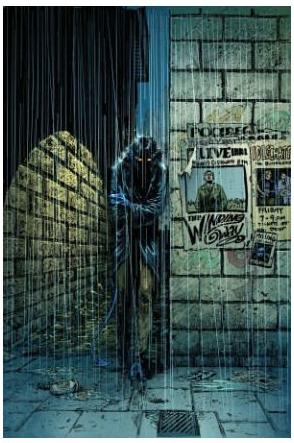Date read: 5/31/08
Read from: Public library
Reviewer: Emera
B.P.R.D.: Hollow Earth and Other Stories collects side stories of the Bureau for Paranormal Research and Defense, from the Hellboy universe, though all (deliberately) absent the eponymous hero.
- “Hollow Earth” (written by Mike Mignola, Christopher Golden, and Tom Sniegoski; art by Ryan Sook and Curtis Arnold): The fish-man Abe Sapien, Roger the homunculus, and a disembodied medium named Johann Krauss venture into the center of the earth, searching for their missing teammate.
- “The Killer in my Skull” (written by Mike Mignola, art by Matt Smith and Ryan Sook): The B.P.R.D.’s Depression-era counterpart, Lobster Johnson, encounters a mad scientist.
- “Abe Sapien versus Science” (written and inked by Mike Mignola, drawn by Matt Smith): A disquieting glimpse into the origins of both Abe and Roger.
- “Drums of the Dead” (written by Brian McDonald, art by Derek Thompson): Abe and a young psychic investigate paranormal incidents – possession, inexplicable shark swarms, ghostly drumming – manifesting on an Atlantic shipping route.
I read the first Hellboy collection quite a while ago, and wasn’t impressed, but reading this actually motivated me to go back to the series. Though the stories aren’t terribly original, I’m a sucker for the art (most of the art in these stories closely emulates Mignola’s own, though whether that’s good or bad is debatable) and characters – particularly the erudite, gently tragic Abe. I love the art’s distinctively shadowy, bold look, and Dave Stewart’s dim colors give the series an appropriately eerie, pulp feel – the panels look as though they’ve had all the light sucked out of them, except for cigarette sparks and lantern glows and the occasional dose of phosphorescence or hellfire. This was especially effective for the haunted-ship story – I always love a good sea-ghost tale.
Bottom line: predictable stories, but the art and affecting characters win out for me.
Go to:
Mike Mignola

